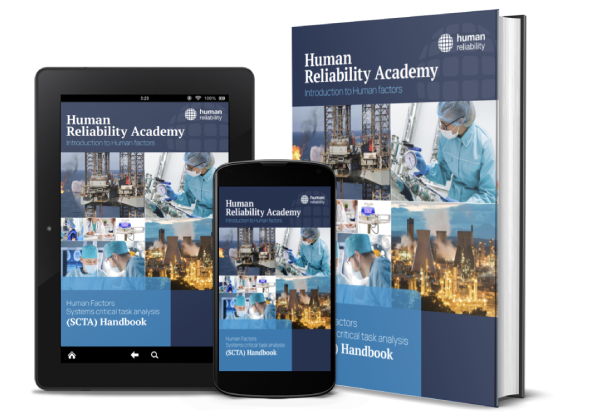The same psychological mechanisms that underly errors in our ordinary, everyday life are also at play in the most extraordinary events that we see in the headlines. The positive message is that we can understand these mechanisms and do something about it.
From “The Errordiary Project” to the concept ‘Errordinary’
The Errordiary Project started about 13 years ago on Twitter. Having a fascination with human error, I started to log the errors I was making along with some colleagues at University College London (UCL). We included errors we heard about from friends and those reported in the media. This included funny, frustrating, and sometimes even fatal errors.
Part of the mission for this project was to break down the stigma around human error, and educate people about the psychology of human error and the discipline of Human Factors.
This gathered momentum as more people got involved using the hashtag #errordiary. We secured a Public Engagement grant and developed a website, with resources about human error, and gave public lectures on the subject.
I knew we were getting into the psyche of some of my friends at least when one confided that he saw his wife do something wrong, and merely pointed at her, smiled, and said ‘Errordiary!’ Someone contributing to The Errordiary Project ironically got it wrong. They instead inserted the hashtag #errordinary (with an ‘n’). Brilliant! This was exactly the sort of conception we were trying to create with the project. We had moved from a diary which logged instances of error (“Errordiary”) to communicating the ordinary nature of error (“Errordinary”).
The Psychology of Human Error
One of the things we wanted to do with the instances of error that were coming in was to categorise them. Popularised by Prof James Reason in the 90’s, who studied everyday errors, is a categorisation scheme that most Human Factors practitioners would have learnt about in their training: slips, lapses, mistakes and non-compliance.
Slip errors
These are errors of commission. So, you find yourself doing something but it’s the wrong thing to do. A favourite of mine from The Errordiary Project is putting orange juice on your cornflakes rather than milk. Interestingly, in all the talks I’ve given about this, I’ve had two people who claim they do this intentionally and don’t see a problem with it. Other funny and frustrating examples included putting grapes in your salad instead of olives, and spraying a can of shaving foam under your arm as you thought it was deodorant.
These are examples of description errors as I think Don Norman might call them. The mind doesn’t describe the object you interact with in enough detail and finds itself doing the right action on the wrong object.
More serious errors from The Errordiary Project include a police officer getting their taser confused with their firearm, and a surgeon getting some dye confused with glue. Even with these more serious examples, similar psychological mechanisms and mischief are at play. Also, it’s not like these sorts of errors only happen to silly people who aren’t concentrating, both examples here are very serious with highly trained individuals.
Lapses
Lapses are errors of omission. So typically, you forget to do something. One of my favourite examples from The Errordiary Project was someone who forgot to take their socks off before getting in the bath. I suppose I find this so interesting because the act of stepping in the bath makes your foot quite salient and I would have thought the person could have recovered at that point. More common examples might be not including an attachment in an email, forgetting the originals on a photocopier, and leaving your keys at home.
More serious errors from The Errordiary Project include retained foreign objects in surgery. This is where a surgeon might leave a swab or a tool inside the body after surgery. But again, these are smart people, who are concentrating and trying their best, and there are similar psychological mechanisms at play with everyday and more serious examples.
Mistakes
Mistakes are more to do with gaps in knowledge, poor choices, and poor planning. These are different to slips and lapses which are errors of attention. Mistakes are intentional in that the person thinks about it consciously and decides to do the wrong thing.
These were a little less common in The Errordiary Project, I think because slips and lapses really jump out at us – we can’t believe we’ve just done the right action on the wrong object, or that we have forgotten to do something. Mistakes are perhaps more subtle, or their consequences take some time to play out.
A recent contribution to the The Errordiary Project stream includes a guy in a sports car stranded in the sand as he thought it’d be a good idea to go for a drive on the beach. More seriously in our teaching we discuss an explosion at Longford, Australia, where some pipework became super cold, and to rectify this the operator pumped warm fluid into them but they ruptured as the temperature difference was too great.
Non-compliance
Sometimes referred to as violations, these are when the person is aware of some known rules but chooses to break them, or not follow them, for some reason. An obvious example here is breaking the speed limit. Going slightly over 30mph in the UK is probably quite common for a lot of drivers, but going over 100mph down the motorway is probably less common, so there are different levels of rules breaking.
Issues of non-compliance are interesting. We’d advise people to explore what was going on behind the decision not to follow the rules. Perhaps the rules or procedures are out of date and unreasonable, perhaps the person found themselves in a difficult situation where breaking the rules seemed sensible. Procedure design and management is a whole topic area in its own right.
These different categories of human error have stood the test of time. There are limitations in their use. For example, sometimes errors do not fit neatly into a category, sometimes it could be ambiguous in terms of what category is most applicable. Positively, we still find these useful for exploring what might be going on in people’s heads when things go wrong. But more critical reviewers might point out that, like most categorisation schemes, these distinctions are artificial and we can’t really be sure which error is which, and, indeed, if it can even be considered an error.
This BBC documentary on errors, staring Prof James Reason and our very own Dr David Embrey, uses a similar communication strategy to The Errordiary Project – studying everyday errors, recognising patterns of behaviours within these errors, and linking to similar patterns of behaviour in more serious accidents. We find ourselves going from Errordinary to the Extraordinary!
Predicting errors in Industrial settings
Errors in industrial settings can have big consequences, endangering human life, and harming the environment. These big accidents can hit the headlines and be a source of major reputational damage for organisations on top of the harm that may have been caused to individuals.
These big consequence events are sometimes related to what are called Major Accident Hazards (MAH), and in some regions these could occur in what are called Major Hazard Installations (MHI).
MHI are waking up to Human Factors risk management because they want to put in place adequate controls against human error.
We use the understanding of error types outlined in this article for clients across different sectors who are worried about the vulnerabilities of human failure. Addressing these different error types might be to improve safety for an oil, gas or chemical plant, for example in Human Factors Safety Critical Task Analysis, or it might be to improve production and quality for Pharmaceutical Manufacturing.
Follow us
If you like this blog, please sign-up to our newsletter and distribution list so we can give you updates on new blogs, webinars, resources, and training that we have coming.














